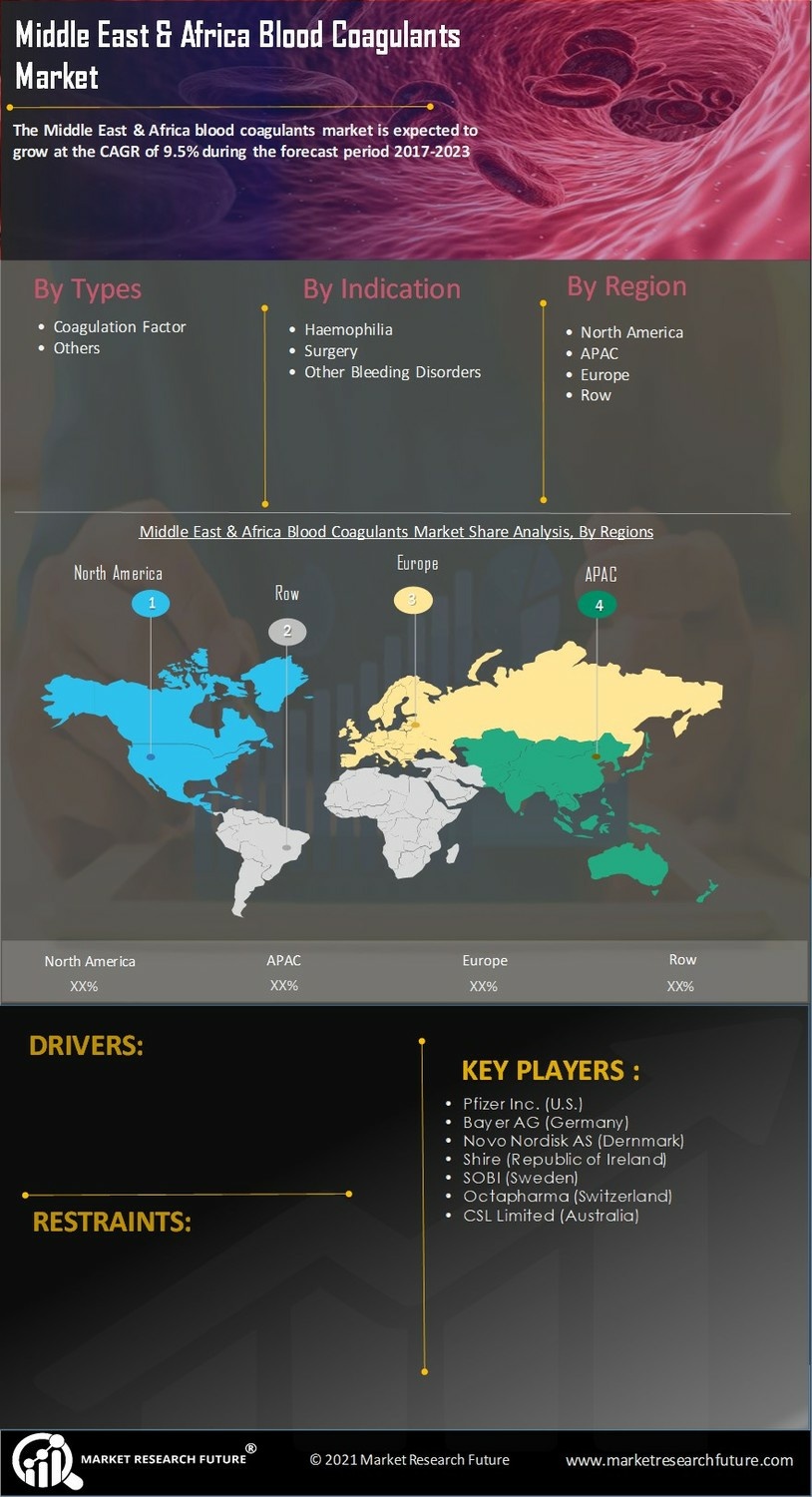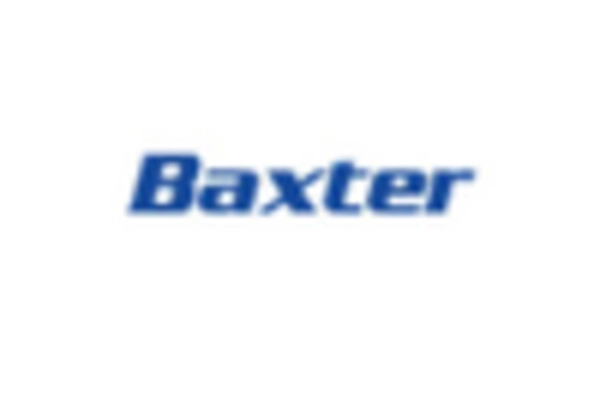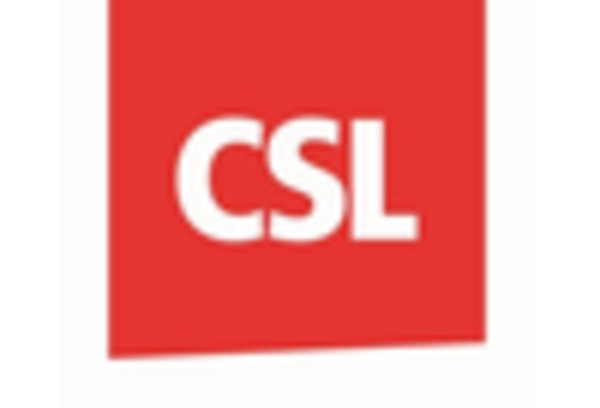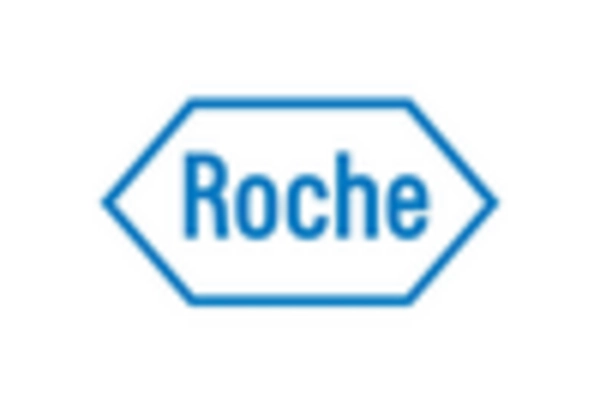Rising Geriatric Population
The aging population in the Middle East and Africa is contributing to the demand for blood coagulants, as older adults are more susceptible to bleeding disorders and related complications. This demographic shift is influencing healthcare priorities and resource allocation within the Global Middle East & Africa Blood Coagulants Market Industry. As the geriatric population continues to grow, healthcare providers are increasingly focusing on preventive measures and effective treatment options. This trend is likely to bolster market growth, aligning with the overall increase in healthcare expenditure and the anticipated market value of 1250 USD Million in 2024.
Advancements in Biotechnology
Technological innovations in biotechnology are reshaping the Global Middle East & Africa Blood Coagulants Market Industry. New recombinant factor therapies and bioengineered products are being developed, offering enhanced efficacy and safety profiles compared to traditional treatments. These advancements are likely to attract investment and research efforts, fostering a competitive landscape. As a result, the market is anticipated to grow at a CAGR of 7.43% from 2025 to 2035. The introduction of novel therapies not only improves patient outcomes but also addresses the unmet needs of various bleeding disorders, thereby expanding the overall market.
Market Trends and Projections
The Global Middle East & Africa Blood Coagulants Market Industry is witnessing dynamic trends that reflect the evolving landscape of healthcare. Projections indicate a market value of 1250 USD Million in 2024, with an anticipated growth trajectory leading to 2750 USD Million by 2035. The compound annual growth rate (CAGR) of 7.43% from 2025 to 2035 underscores the increasing demand for innovative blood coagulants. This growth is driven by factors such as technological advancements, demographic shifts, and enhanced healthcare policies, which collectively shape the future of the market.
Growing Awareness and Education
There is a notable increase in awareness and education regarding bleeding disorders and the importance of blood coagulants in the Global Middle East & Africa Blood Coagulants Market Industry. Educational campaigns and outreach programs are being implemented to inform patients and healthcare professionals about available treatments. This heightened awareness is likely to lead to earlier diagnosis and treatment, ultimately improving patient outcomes. As more individuals seek effective therapies, the market is expected to experience substantial growth, with projections indicating a market value of 2750 USD Million by 2035.
Government Initiatives and Funding
Government initiatives aimed at improving healthcare infrastructure and access to treatment are pivotal for the Global Middle East & Africa Blood Coagulants Market Industry. Various countries are implementing policies to enhance the availability of blood coagulants, particularly in underserved regions. Increased funding for healthcare programs and partnerships with pharmaceutical companies are facilitating the development and distribution of essential therapies. This proactive approach is expected to drive market growth, with projections indicating a market value of 1250 USD Million in 2024 and a potential rise to 2750 USD Million by 2035, reflecting the commitment to improving health outcomes.
Increasing Prevalence of Hemophilia
The rising incidence of hemophilia and other bleeding disorders in the Global Middle East & Africa Blood Coagulants Market Industry is a critical driver. Hemophilia affects approximately 1 in 5,000 male births, leading to a growing demand for effective coagulant therapies. This trend is particularly evident in regions with limited access to treatment, where patients rely heavily on blood coagulants for managing their conditions. As awareness and diagnosis improve, the market is expected to expand significantly, contributing to the projected market value of 1250 USD Million in 2024 and potentially reaching 2750 USD Million by 2035.

















Leave a Comment